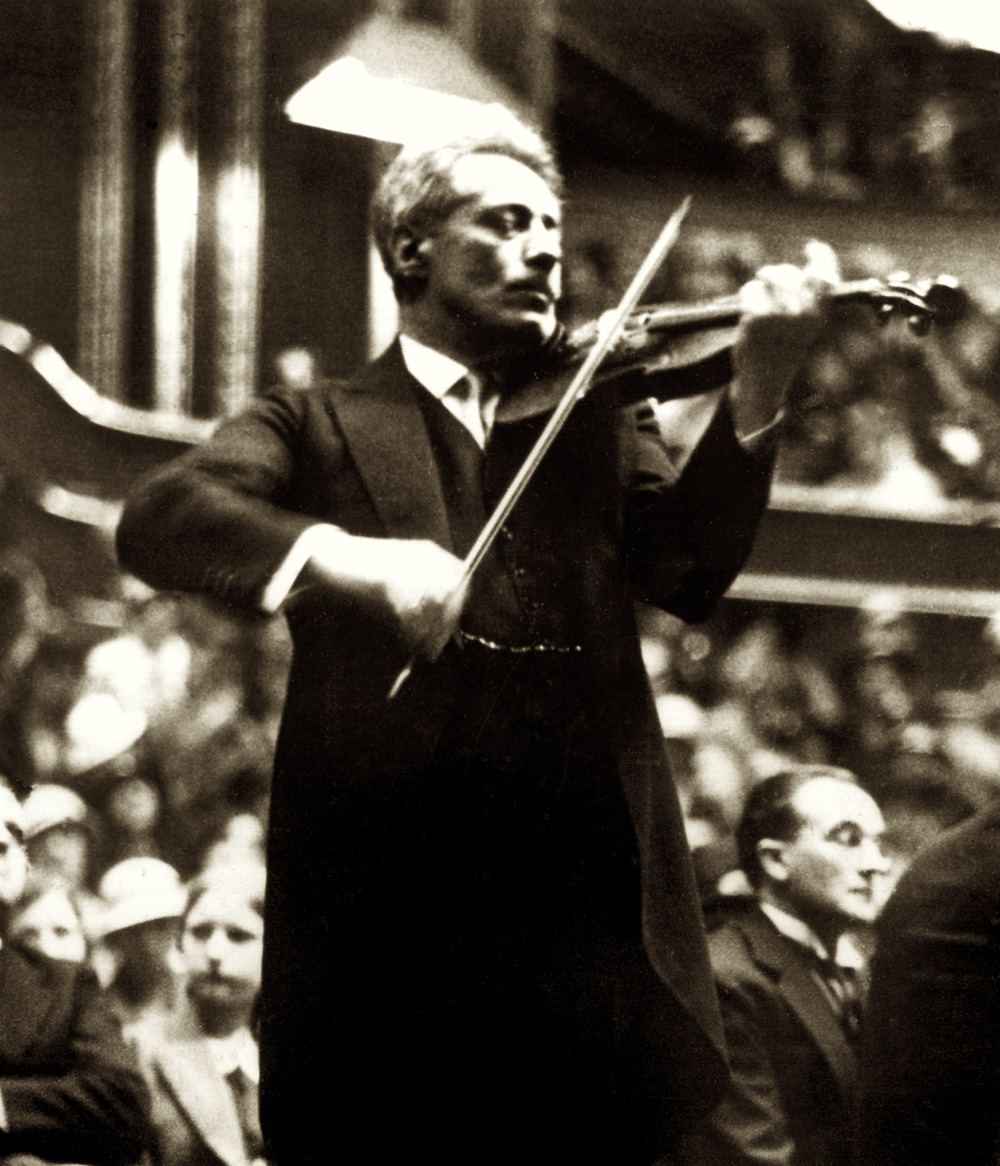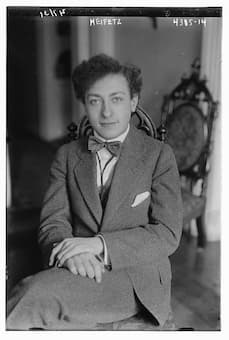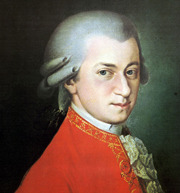One of the most exciting moments in a concerto is when the orchestra, poised on an incomplete cadence, ceases to play and lets the soloist loose. The soloist gathers together all the melodic strings into one exciting moment of improvisation and creates the cadenza for the movement.
Cadenzas are an interesting time for the soloist to move away from the constraints imposed by the composer who wrote the music and those of the orchestra, who force the soloist to work with it. Finally, in the cadenza, all constraints are removed and the soloist, as a thinking musician, is free to create an individual space.

Beethoven © U.S. Public Domain
Or, at least, that’s the concept. In reality, however, few soloists have the ability to improvise to the level of Mozart or Beethoven. Cadenzas since the time of Beethoven have been written out to help the soloist.
Here’s a listening guide to the various cadenzas written for the Beethoven Violin Concerto. A bit of history first. Beethoven wrote the Violin Concerto, op. 61, for his colleague Franz Clement, a leading violinist of the day. The work was given its première on 23 December 1806 and was not a success. Beethoven, at the request of Muzio Clementi, rewrote the piece as a Piano Concerto, Op. 61a. For the piano version, Beethoven wrote a lengthy and rather overstated cadenza that includes features the orchestra’s timpanist along with the soloist. This was later arranged for the violin (and timpani) by Max Rostal, Eugène Ysaÿe, Christian Tetzlaff, and others.
Ludwig van Beethoven: Violin Concerto in D Major, Op. 61: I. Allegro ma non troppo (cadenza with timpani) (Liza Ferschtman, violin; Netherlands Symphony Orchestra; Jan Willem de Vriend, Conductor) cadenza starts at: 18:46, ends at 23:58

Fritz Kreisler
Since there is no original cadenza written by Beethoven for the Violin Concerto, performers started writing their own. The most performed version was written by violinist Fritz Kreisler and opens with ascending double stops:
Ludwig van Beethoven: Violin Concerto in D Major, Op. 61: I. Allegro ma non troppo (cadenza by Fritz Kreisler) (Isaac Stern, violin; New York Philharmonic Orchestra; Leonard Bernstein, Conductor) cadenza starts at: 19:28, ends at 22:30
Nathan Milstein’s cadenza, here performed by Milstein with the Pittsburgh Symphony Orchestra, uses the opening double stops to great effect in the beginning:
Ludwig van Beethoven: Violin Concerto in D Major, Op. 61: I. Allegro ma non troppo (cadenza by Nathan Milstein) (Nathan Milstein, violin; Pittsburgh Symphony Orchestra; William Steinberg, Conductor) cadenza starts at: 17:41, ends at 20:10

Jascha Heifetz in 1917
The cadenza by Jascha Heifetz, on the other hand, pays less attention to the double-stops and more to the virtuosic and technical aspects of violin playing: extreme registers, scalar runs, playing the melody with a concurrent vibrato on another string, and so on:
Ludwig van Beethoven: Violin Concerto in D Major, Op. 61: I. Allegro ma non troppo (cadenza by Jascha Heifetz) (Aaron Rosand, violin; Monte-Carlo Philharmonic Orchestra; Derrick Inouye, Conductor) cadenza starts at: 17:26, ends at 20:28
The cadenza that broke the mould however, was the modern cadenza written in 1975-77 by Russian composer Alfred Schnittke:
Beethoven Violin Concerto – Schnittke Cadenza Mov 1 – Kremer
This cadenza carries a distinctly 20th century tone and can be quite disconcerting for an audience more familiar with the Classical or classic cadenzas.
A new cadenza written in 2011 for Canadian violinist Alexandre Da Costa imparts a very different spirit on the cadenza. Russian-Canadian composer Airat Ichmouratov created what can only be called a “klezmer-inspired” solo that also includes chords for the orchestra within the cadenza. Traditional Jewish melodies appear at the end of the cadenza:
Beethoven Violin Concerto (1st mvt)
Da Costa / Taipei Symphony – Wildner
cadenza starts at: 20:31, ends at 24:49; particularly at 22:47
There are some 25 different cadenzas for Beethoven’s Violin concerto and each of them gives us a different view into the work. What are the important melodies and how can they be varied to both show off the melodic writing and the technical virtuosity of the performer? This is a challenge that the cadenza poses to the performer and if he has to take refuge in other’s concepts, that’s OK.
For more of the best in classical music, sign up to our E-Newsletter




I have been researching the Beethoven Op. 61a, piano version. So far, at least, I cannot find any sources for Beethoven’s “lengthy and rather overstated cadenza that includes features the orchestra’s timpanist along with the soloist.” Maybe someone is following this page who has some clue.
The one that best fits, and incorporates most themes, is the Kreisler Cadenza, which most tailors itself woven from the cloth that Beethoven presented in the concerto. It clothes itself snugly into it. The most intriguing cadenza was the Klezmer-style cadenza that caught my ears unaware; it refocused me. What a ‘take’ it was. I’d like to give that one a go, just for the fun of it.
In describing the transcription of Beethoven’s own cadenza to the piano version, the author states mis-information : this version for the violin was arranged by Wolfgang Schneiderhahn, not by Max Rostal, Eugéne Ysaÿe (who wrote a rather impressive independent cadenza himself) or Christian Tetzlaff : they may all have played it, but Schneiderhahn has his arrangement published by Henle ! Also, many other cadenzas, foremost the multiple ones by Joseph Joachim, favored by Henryk Szeryng and many students of Carl Flesch, are not even mentioned ! Likewise an interesting one by Ferruccio Busoni, employing the four timpani quarters…! Henri Marteau wrote one as well, and I’m sure there are many others…! (of course, the Schnittke “cadenza” is an abomination…!)
Not a mention of Joseph Joachim’s two classic Cadenzas to the Beethoven Concerto : Henryk Szeryng played it, as did many other students of Carl Flesch’s…! Also, Ysaÿe wrote his own cadenza, but had nothing to do with the violin version arranged from Beethoven’s own piano version op.61a : that was Wolfgang Schneiderhan who published it at Henle ! (Of course, Schnittke’s Cadenza is an abomination…)